
New Photos
April 2, 2006
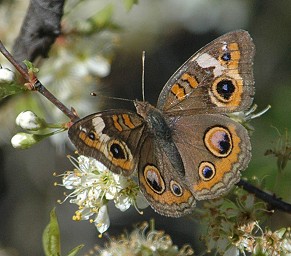 |
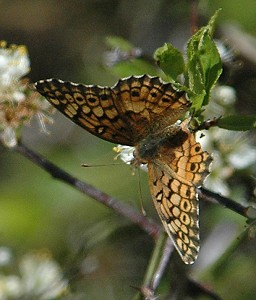 |
| We are lucky to have several different kinds of wild plum, which bloom in sequence not all together. These thicketing plums (not sure of the species) put out leaves and flowers together, with the same intoxicating scent as the Mexican plum, but the flowers are smaller and the stamens aren't pink. They're just as busy with butterflies. Here's a Common Buckeye on plum. | And here's a Variegated Fritillary. I clambered into a mess of greenbriar and weeds to get this shot, hoping every moment the rattlesnakes hadn't woken up for spring yet. |
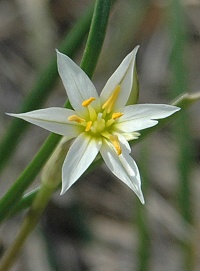 |
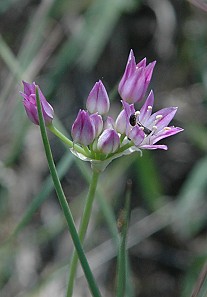 |
| The first wild onions to come up are pure white, bright little stars on the green grass. | Then come the Drummond wild onions, which are pink and purple in various shades. They overlap the white-flowered species but don't start until two or three weeks later. |
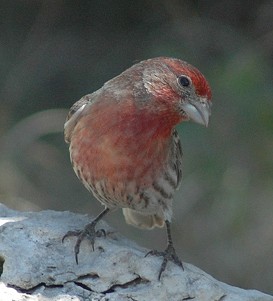 |
|
| I can't resist house finches; I like their colors, their perky attitudes, and their song. So when this fellow cocked his head at me...he won a place in this week's gallery. | |
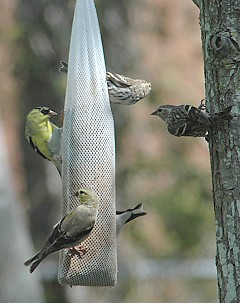 |
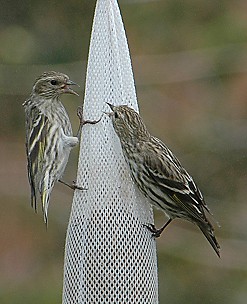 |
| Busy day at the thistle-seed "sock" feeder--it's been like this for the past week, with American and lesser goldfinches, house finches, and--this day--two pine siskins all eager for thistle seeds. Some of these are winter residents; the house finches and lesser goldfinches are year-round natives, and the pine siskins show up during migration. | "I was here first!" These two pine siskins didn't care that both could feed on thistle seed at different levels...neither one wanted to give way. At first glance, from a distance, the bold stripes could make you think "female house finch", but those sharp little beaks aren't house finch (or purple, or Cassin's) finch beaks. There's a bit of yellow just showing as a streak along the edge of the wing, but it doesn't show well at this size. |
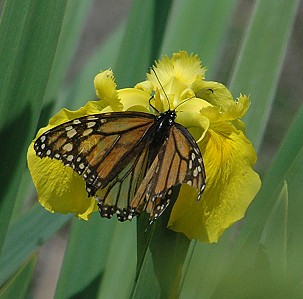 |
|
| Monarchs have been moving through in the past couple of weeks. This one came into the back yard and settled on the yellow water iris flowers, which had just started opening a day or so before. It's an old butterfly, most of the scales from the wings gone (especially the hind wing), and the wings tattered...undoubtedly it's one from the Mexican wintering grounds. You can actually see the iris flower's yellow and the green of the leaves through some of the wing panels. | |
![]()

